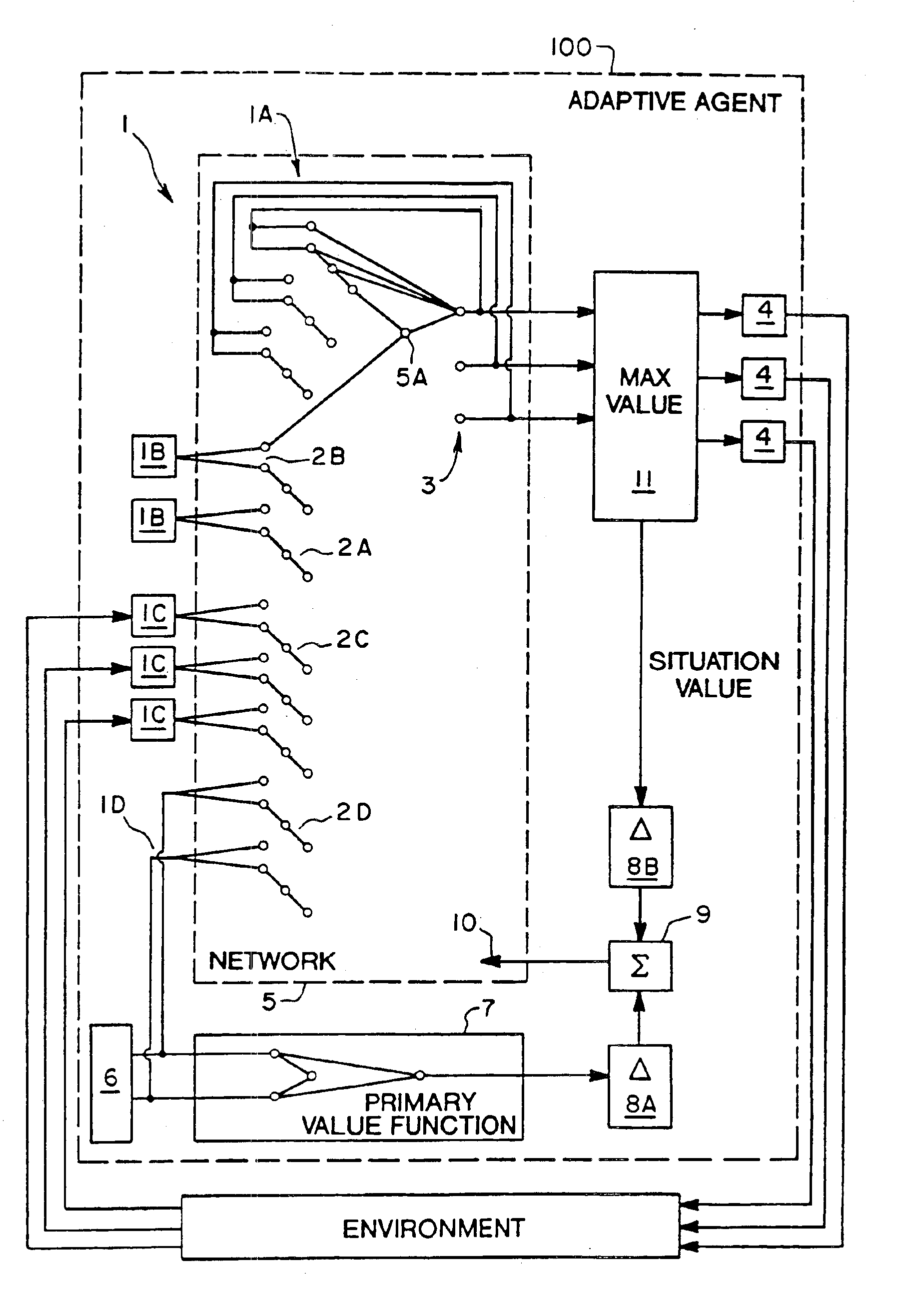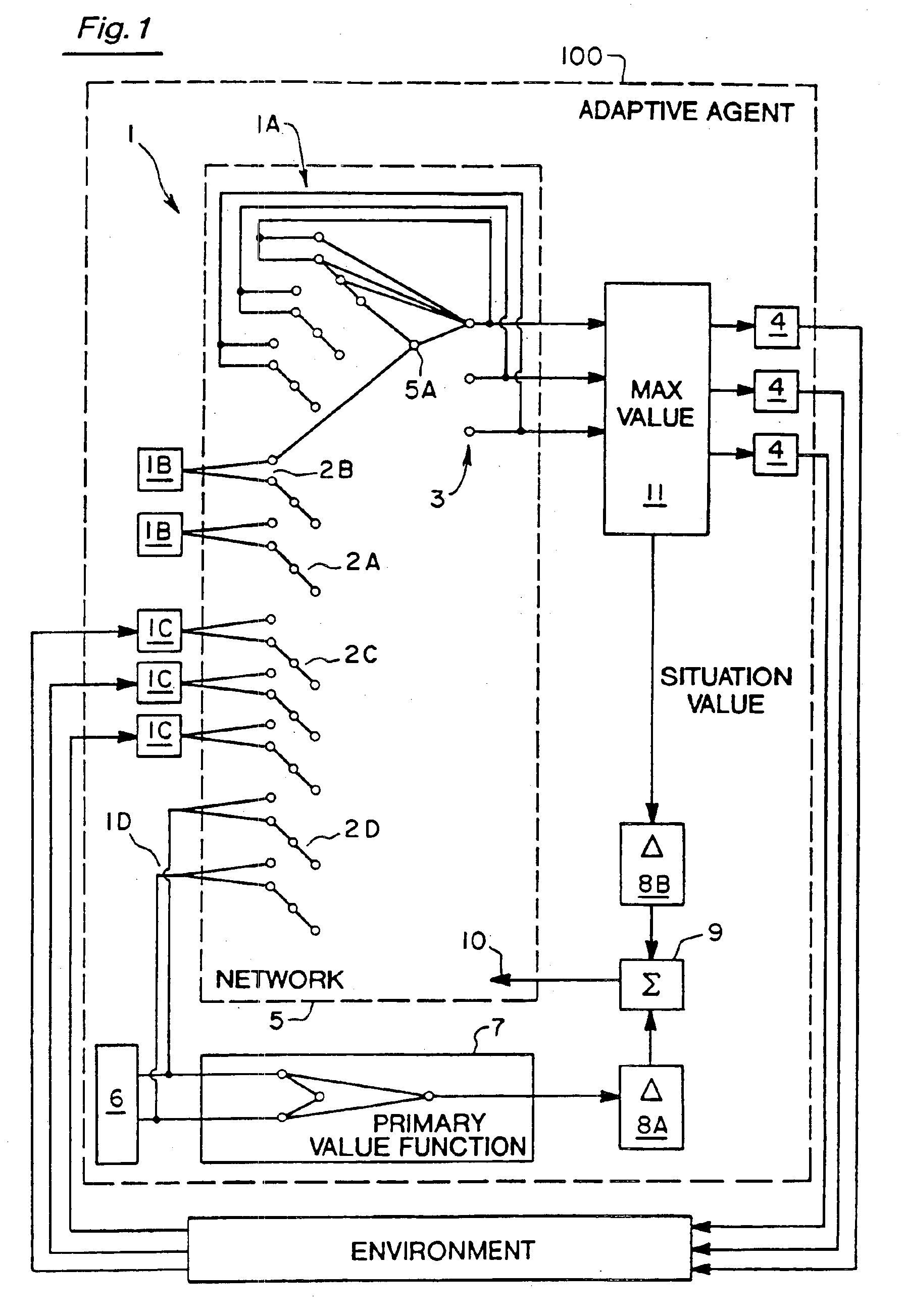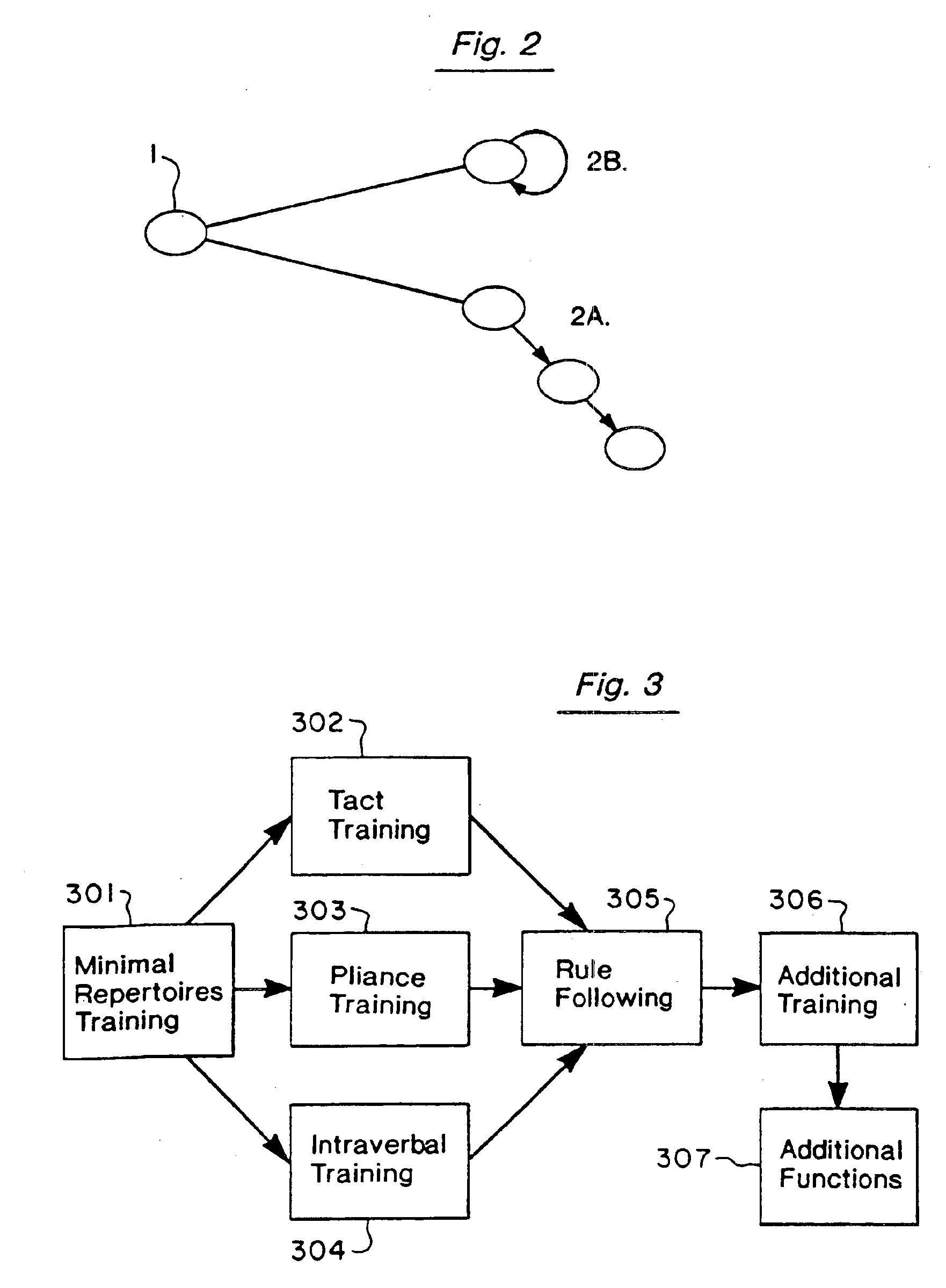Adaptive autonomous agent with verbal learning
a technology of adaptive autonomous agent and verbal learning, applied in the field of artificial intelligence systems, can solve the problems of reducing the likelihood of achieving desired, saving the developer a large amount of work, etc., and achieve the effect of efficient “training”
- Summary
- Abstract
- Description
- Claims
- Application Information
AI Technical Summary
Benefits of technology
Problems solved by technology
Method used
Image
Examples
Embodiment Construction
[0053]Referring to FIG. 1, a suitable architecture for implementing the invention is described. Each element can be implemented in hardware or software (i.e., the system can be a freestanding robot or an electronic agent in a computer). Sensors (1) acquire information and convert it into a form appropriate for input to Network Stimuli (2). Sensors may comprise Recurrent internal connections (1A) which sense the system's own previous outputs on a one-to-one basis or alternatively external sensors which detect system actions (FIG. 1 shows direct internal connections, the preferred embodiment). Alternatively, sensors could be connected to intermediate “hidden” nodes in the network. At a minimum, the sensor directs at least whether the response was executed or not, but if internal connections are used, the input can also detect an absolute or relative measure of value for unexecuted responses, if such information is essential or valuable for the system's desired performance. Sensors may...
PUM
 Login to View More
Login to View More Abstract
Description
Claims
Application Information
 Login to View More
Login to View More - R&D
- Intellectual Property
- Life Sciences
- Materials
- Tech Scout
- Unparalleled Data Quality
- Higher Quality Content
- 60% Fewer Hallucinations
Browse by: Latest US Patents, China's latest patents, Technical Efficacy Thesaurus, Application Domain, Technology Topic, Popular Technical Reports.
© 2025 PatSnap. All rights reserved.Legal|Privacy policy|Modern Slavery Act Transparency Statement|Sitemap|About US| Contact US: help@patsnap.com



